Understanding Stroke: Signs, Symptoms, Effects, and Treatments

What is a Stroke?
A stroke occurs when blood flow to a part of the brain is interrupted, causing brain cells to die due to lack of oxygen. It can lead to significant damage, disability, and even death. Recognizing the signs and symptoms early is crucial for effective treatment.
Signs and Symptoms
Common signs of a stroke can be remembered with the acronym FAST:
– Face drooping: One side of the face may droop or feel numb. Ask the person to smile to see if their smile is uneven.
– Arm weakness: One arm may feel weak or numb. Ask the person to raise both arms. Does one arm drift downward?
– Speech difficulties: The person may slur speech or be unable to speak. Ask them to repeat a simple sentence correctly.
– Time to call emergency services: If you observe any of the above signs, call for emergency help immediately.
Additional symptoms may include sudden confusion, trouble seeing in one or both eyes and sudden loss of balance or coordination.
Effects of Stroke
The effects of a stroke can vary greatly depending on the part of the brain affected, which can result in:
– Physical disabilities, such as paralysis or weakness on one side of the body.
– Cognitive impairments, affecting memory, problem-solving skills, and emotional understanding.
– Changes in personality and behavior impact relationships and quality of life.
Diagnosis
Diagnosing a stroke typically involves a physical examination and medical history assessment. Imaging tests, such as CT scans or MRIs, are crucial for identifying the type of stroke (ischemic or hemorrhagic) and the extent of brain damage.
Treatment
Treatment depends on the type of stroke:
– Ischemic strokes (the most common type) are treated with clot-busting medications like tPA (tissue plasminogen activator) and sometimes mechanical thrombectomy to remove the clot.
– Hemorrhagic strokes (caused by bleeding in the brain) may require surgery to repair blood vessels or relieve pressure.
Innovations and Modern Therapies
Recent advancements in stroke treatment include:
– Neuroprotective Agents: Research is ongoing in finding drugs that protect brain cells from damage during a stroke.
– Minimally Invasive Techniques: New surgical techniques minimize recovery time and damage to surrounding tissue.
– Rehabilitation Technologies: Virtual reality and robotic therapies are enhancing recovery processes, helping patients regain mobility and independence more effectively.
Precautions
Preventing a stroke involves addressing risk factors such as:
– Maintaining a healthy lifestyle through diet and exercise.
– Managing underlying conditions like hypertension, diabetes, and high cholesterol.
– Avoiding smoking and excessive alcohol consumption.
Conclusion
Stroke is a medical emergency where every second counts. Being knowledgeable about the signs, symptoms, and treatments can save lives. Staying informed and proactive about prevention can significantly reduce the risk of stroke and its devastating effects on quality of life.
(Note: This article briefly overviews the subject and does not provide medical advice. If you need more information about Stroke, consult a healthcare professional.)



